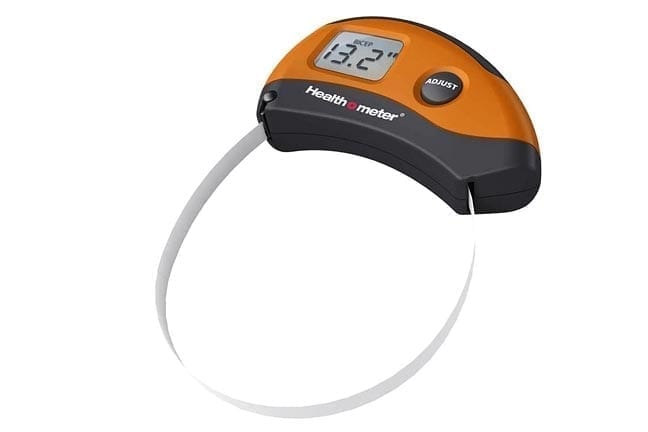When the number on the bathroom scale simply won’t budge, some experts recommend reaching for something you’ll find in a sewing kit—a tape measure. Tracking your progress with a tape measure versus the scale can provide a different perspective on weight loss and may leave you feeling a lot less frustrated about your progress.
READ MORE: Six Apps That Help You Lose Weight
As exercise physiologist Cedric Bryant, Ph.D., the chief science officer for the American Council on Exercise explains it, the scale only tells how much you weigh without revealing any information about body composition. “Muscle is denser than fat so it takes up less room,” he says. “If you reduce fat and increase muscle, a scale won’t show it, but a tape measure will pick it up in the form of lost inches. Even if your weight stays the same at least some of your measurements will be smaller.”
Because everyone loses weight in an individual manner, measurements are often a powerful motivator, Bryant notes. If, for example, you have a tendency to lose body fat from around the middle, it will be reflected in a tinier waist measurement, but if you tend to shed fat from the lower body more easily, a buttocks or thigh measurement will probably be the first place you show progress. “The more measurements you take, the likelier you are to get that positive feedback,” he says.
READ MORE: How Your Waist-to-Hip Ratio Affects Your Health
Plus, there’s another reason to break out the tape: Your waist circumference in particular provides valuable clues about your health. “Visceral fat is the fat stored deep within the abdominal cavity around your organs, and it’s been linked to all sorts of health conditions such as metabolic syndrome, an increased risk for cardiovascular disease and type 2 diabetes,” explains Neal Pire, an American College of Sports Medicine fellow and owner of InsPire Training Systems in New Jersey. “In women, it’s also associated with breast cancer.”
A waist size that’s more than 35 inches if you’re a woman or more than 40 inches if you’re a man is considered a risk factor for developing weight-related health problems. Even if you aren’t overweight, you’re at increased health risk if your waist size is larger than your hips.
Bryant suggests taking body measurements every two to four weeks. That’s enough time so that you’re likely to detect noticeable improvements but not so often that it feels like your obsessing over every tiny hatch mark on the tape. Pire advises pulling the tape snugly but not so tightly that you compress the skin and fat beneath it.
READ MORE: 10 Ways to Lose Fat and Boost Body Confidence
The Right Way to Measure: Here’s how to make sure you’re measuring correctly:
1. Waist: Measure around your abdomen, just above your hip bone. Keep the tape parallel to the floor.
2. Hips: Measure the widest part of the buttocks.
3. Thigh: Stand with your legs slightly apart. Measure the widest part of the right upper leg.
4. Calf: Place your feet flat on the floor. Measure the widest part of the right lower leg.
5. Arm: Measure the center of the right upper arm when your arm is down at your side, with your palm facing forward.
6. Chest: Measure at the nipple line, making sure the tape is parallel to the floor.




































